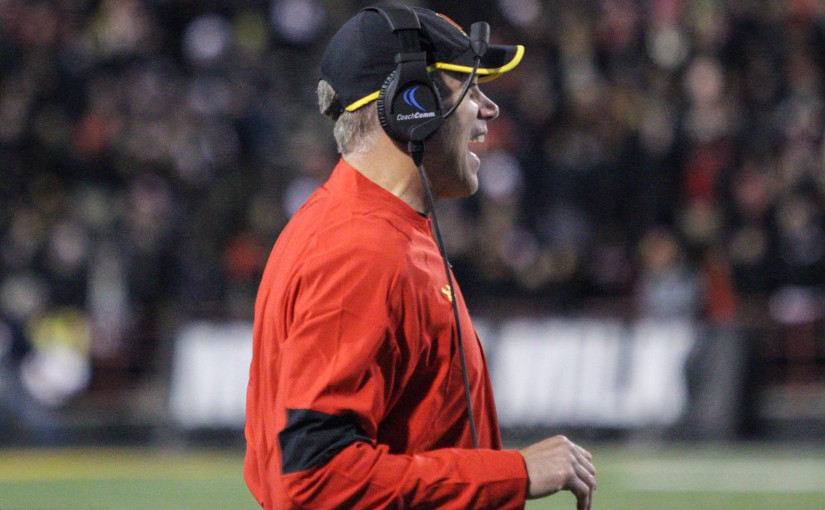The Maryland football team’s pass rush ranked fourth in the nation through its first two games, piling up nine sacks between an upset win at then-No. 23 Texas and a home victory over Towson.
However, Maryland has managed just one takedown since then. The Terps defense, playing without injured 2016 sack leader Jesse Aniebonam, hit a new low when it gave up 531 yards in a 37-21 loss to Northwestern this past weekend
While safety Darnell Savage said the unit isn’t frustrated and defensive coordinator Andy Buh pointed out recent positives, such as two interceptions against the Wildcats, the Terps didn’t offer a clear fix for their struggles.
If they don’t find a solution before their road matchup with No. 5 Wisconsin on Saturday, a third straight double-digit defeat could ensue.
“It’s definitely something we want to try and get fixed,” Savage said. “The biggest thing we can do is not panic and kind of keep playing.”
[Read More: Big Ten officials admit to blown call in Maryland football’s loss to Northwestern]
Maryland (3-3, 1-2 Big Ten) hasn’t recorded a second-half sack in more than a month. Coach DJ Durkin attributed that failure to losing one-on-one battles against opposing offensive linemen. Without Aniebonam, who fractured his ankle against Texas, the Terps can’t rely on a veteran rusher at Wisconsin (6-0, 3-0).
Defensive lineman Brett Kulka said the unit can do a better job of sticking to its rushing assignments by not moving out of position after the snap. But the lack of a player with more than 10 career sacks makes it difficult to apply pressure, regardless of execution.
Buh said Maryland’s issues are not related to his defensive scheme. After all, he’s tried a number of blitzing approaches.
“We’ve mixed it up between three-, four-, five-, and six-man pressures,” Buh said. “We’re showing heavy pressure and getting out. We’re also showing pressure and bringing it.”
On Wednesday, Buh took exception to a question suggesting it’s been “fairly easy” for teams to move the ball against Maryland, even as the group ranks last in the Big Ten in yards allowed per contest.
“I wouldn’t say fairly easy,” Buh said. “That’s not the words I would use. The defense has been playing pretty good at the beginning of the game. There’s an element of them wearing down a little bit as we get to the second quarter and towards the end of the half.”
Maryland’s defense has on average held teams to five points in first quarters this season. But because the group gives up over 31 points on average in the other three periods, that early success has made little difference.
Wisconsin, led by star freshman running back Jonathan Taylor, is known for tiring opponents with its powerful offensive line and conservative play calling. That makes Saturday’s contest daunting for Maryland’s reeling front seven.
Durkin took note of Wisconsin’s size — and the danger its line poses to the Terps’ defense — when watching game film of the Badgers this week.
“They’re really physical on both sides of the ball,” Durkin said. “Whether it was right away in some of them, or as the game wore on eventually, that’s what they did — they took over at the line of scrimmage.”



